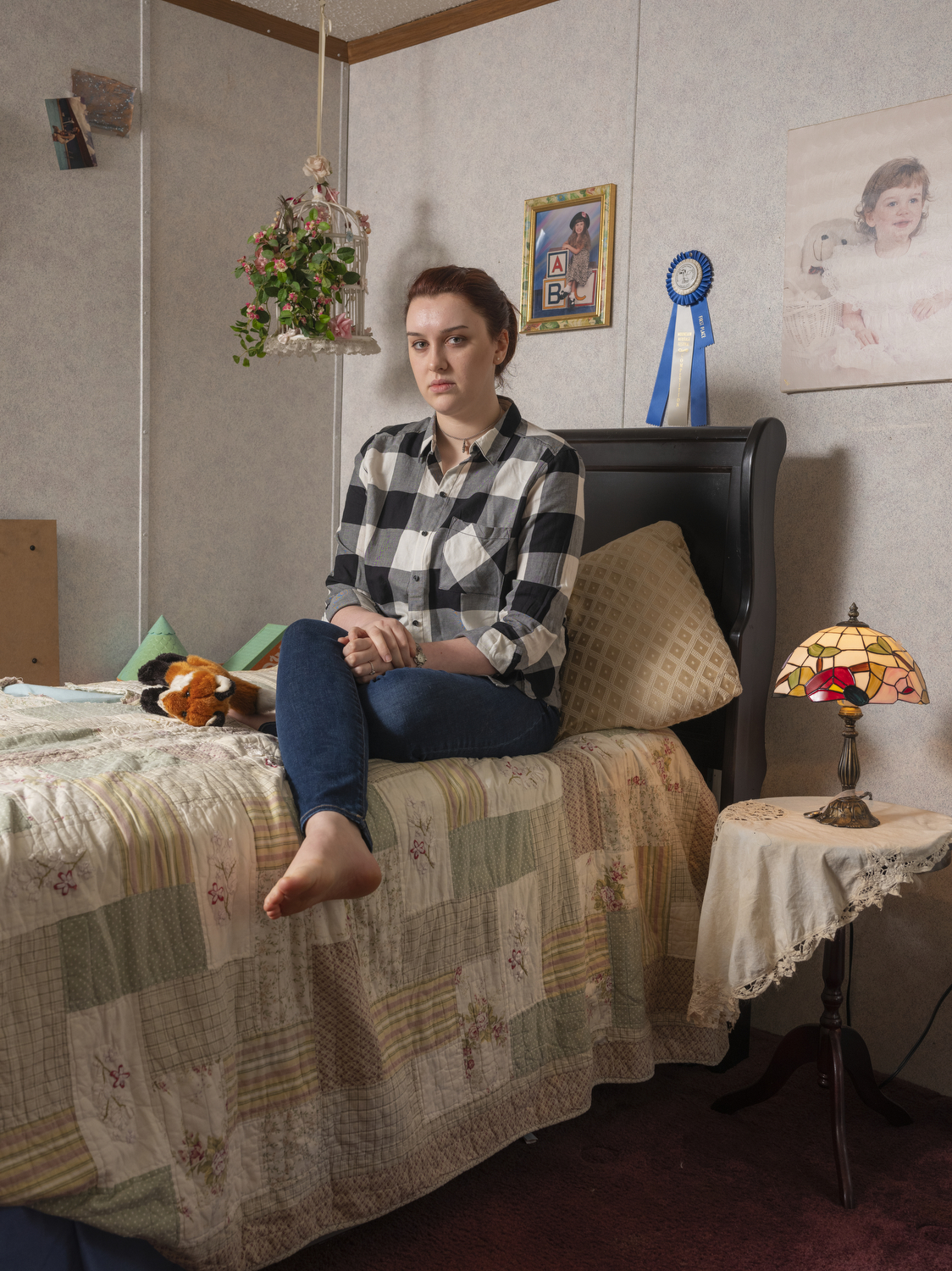Y Combinator advised Gray not to tell me how much funding he was seeking, because it looks bad if you don’t hit the mark. But his idea was built to appeal to investors. Other ideas he’d considered earlier were more like moonshots–hotels for homeless people, for example.
“The challenge here is to build a business that does good and can raise money. You need to figure out how to monetize it,” Gray said. “If you can help people and they can pay for it, that’s the key.” For all his idealism, he had adapted to a venture system that has evolved to act as the spear tip of profit-seeking capitalism and American individualism.
I asked Charley Ellis why he thought all these smart investors and entrepreneurs hadn’t put their time and money into health systems that could detect infectious diseases, or quicker ways to develop drugs and vaccines, or unemployment benefit systems that could cope with a sudden crush of applications.
Ellis pointed out that people have a hard time seeing outside their universe. “People inside an industry are so focused on creating money for their industry,” he said. “Nobody wants to stop the game.”
“The challenge here is to build a business that does good and can raise money … If you can help people and they can pay for it, that’s the key.”
Gray is definitely in the game. He lost his father, who worked on Wall Street, to cancer when he was a young teenager and then went to Columbia University, where he studied philosophy and astronomy. After he figured out that academia moved too slowly for him, he enrolled at Wharton, the University of Pennsylvania’s business school. This Ivy League pedigree gave him access to a world most entrepreneurs can’t dream of reaching. Adam Grant, a famous UPenn management professor, became an adviser to Ophelia and he discussed his idea with Tom McClellan, Barack Obama’s drug czar.
Listening to Gray, it was hard not to think about the advantages wealth and connections offer. These benefits have been quantified by researchers who studied 1 million US patent holders and looked at their parents’ income. Low-income students who scored in the top 5% in math were no more likely to become inventors than below-average math students from affluent families, they found. Meanwhile, if women, minorities, and children from low-income families were to invent at the same rate as white men from families with incomes in the top 20%, the rate of innovation in America would quadruple.
The advantages of wealth build on each other. Information is an important one: Gray knew from the beginning that he wanted to get into Y Combinator, which he’d heard about as a student. And getting into the accelerator, in turn, “de-risked and legitimized Ophelia,” he says. With that important stamp of approval, he was able to recruit a cofounder, Mattan Griffel, a more experienced entrepreneur who became his chief operating officer.
Slow evolution
Still, while Ophelia fits the traditional profile of an investable company for the likes of Y Combinator and the venture capitalists who go on to fund its startups, the industry has been changing, at least a little. Recent years have brought a new class of “impact investors,” who eschew the profit-obsessed venture capital model to focus on social good as well as high returns. And following a series of lawsuits and accusations of sexual harassment and discrimination, some new faces are getting a seat at the table.
Susan Choe, the founder of Katalyst Ventures, is an investor in Zipline, whose drones deliver medical supplies in poor countries where infrastructure is lacking. It’s valued at more than $1 billion. She also pointed me to All Raise, an organization that promotes women in venture capital. It reported in 2019 that a record 54 women became VC partners, though 65% of venture capital firms still have no female partners.
“Change is being driven by the fear of being left behind,” says Choe, who says that limited partners–investors–in her funds include executives from outside the US. Millennials tend to be drawn toward more diverse teams, too, she says.
She is among those who make the case that venture capital firms overlook products and services that cater to ignored communities or create new markets. “Investors are leaving money on the table, and they are missing innovation because the people that are running these VCs cannot relate to the preferences of people that are living outside their experiences,” says Lisa Green Hall, a fellow at Georgetown’s Beeck Center for Social Impact & Innovation and former CEO of Calvert Impact Capital. “In the white male culture … those cultures are extremely narrow. For women and people of color, those cultures are much more expansive.”
It brought to mind Jasmine Edwards, a black woman from Tampa, Florida, who launched an education startup that aimed to help schools with low-income students find better substitute teachers. With 200 substitute teachers on the platform and three schools as paying customers, the startup ran out of time and cash, and it folded. What could have been different if she had been able to raise the funds she needed to continue?

NICO ORTEGA
What are you building?
On April 18, Marc Andreessen emerged with another essay, this time occasioned by the pandemic and titled “It’s Time to Build.” He wrote:
“Every step of the way, to everyone around us, we should be asking the question, what are you building? What are you building directly, or helping other people to build, or teaching other people to build, or taking care of people who are building? If the work you’re doing isn’t either leading to something being built or taking care of people directly, we’ve failed you, and we need to get you into a position, an occupation, a career where you can contribute to building.”
He talked about skyscrapers and factories and said people should listen to Elon Musk. He called on everyone to build, although he didn’t make it clear what he would be building–or investing in–himself. (Andreessen declined to comment for this story.) I revisited the Andreessen Horowitz portfolio, which includes dozens of software winners, like Facebook, Box, Zynga, and Github, but not many companies building things that would have been useful in tackling the pandemic.
One sunny day, I took my two daughters over to Arlington Cemetery, right outside Washington, DC, to leave sunflowers on my mom’s grave. The radio was buzzing over Musk’s announcement that his new baby would be called X AE A-12.
“Who would do that to their kid?” asked Quinn.
“Don’t worry,” Lillie said. “X AE A-12 Musk will be able to pay other kids not to bully him.”
Before covid-19, I would have laughed off Andreessen’s bluster and Musk’s theatrics as inconsequential. But the pandemic made the gap between the world they live in and the world the rest of us inhabit seem even larger and more important.
“I’m grateful for all my donations, because they were given by people who don’t have a lot to give. But it’s not $2.7 million.”
Indeed, it has become clearer that things many people thought about life in America aren’t true. The nation wasn’t ready for a pandemic. It hasn’t made much progress on providing justice for all, as the riots provoked by police brutality in late May reminded us. And it is hard to claim that it remains the world’s most innovative economy. Software and technology are only one corner of the innovation playground, and the US has been so focused on the noisy kids in the sandbox that it has failed to maintain the rest of the equipment.
People who really study innovation systems “realize that venture capital may not be a perfect model” for all of them, says Carol Dahl, executive director of the Lemelson Foundation, which supports inventors and entrepreneurs building physical products.
In the United States, she says, 75% of venture capital goes to software. Some 5 to 10% goes to biotech: a tiny handful of venture capitalists have mastered the longer art of building a biotech company. The other sliver goes to everything else–“transportation, sanitation, health care.” To fund a complete system of innovation, we need to think about “not only the downstream invention itself, but what preceded it,” Dahl says. “Not only inspiring people who want to invent, but thinking about the way products reach us through companies.”
Dahl told me about a company that had developed reusable protective gear when Ebola emerged, and was now slowly ramping up production. What if it had been supported by venture funds earlier on?
That’s not going to happen, Asheem Chandna, a partner at Greylock, a leading VC firm, told me: “Money is going to flow where returns are. If software continues to have returns, that’s where it will flow.” Even with targeted government subsidies that lower the risks for VCs, he said, most people will stick with what they know.
So how can that change? The government could turn on the fire hose again, restoring that huge spray of investment that got Silicon Valley started in the first place. In his book Jump-Starting America, MIT professor Jonathan Gruber found that although total US spending on R&D remains at 2.5% of GDP, the share coming from the private sector has increased to 70%, up from less than half in the early 1950s through the 1970s. Federal funding for R&D as a share of GDP is now below where it was in 1957, according to the Information Technology and Innovation Foundation (ITIF), a think tank. In government funding for university research as a share of GDP, the US is 28th of 39 nations, and 12 of those nations invest more than twice the proportion the US does.
In other words, the private sector, with its focus on fast profits and familiar patterns, now dominates America’s innovation spending. That, Dahl and others argue, means the biggest innovations cannot find their long paths to widespread adoption. We’ve “replaced breakthrough innovation with incremental innovation,” says Rob Atkinson, founder of the ITIF. And thanks to Silicon Valley’s excellent marketing, we mistake increments for breakthroughs.
In his book, Gruber lists three innovations that the US has given away because it didn’t have the infrastructure to bring them to market: synthetic biology, hydrogen power, and ocean exploration. In most cases, companies in other countries commercialized the research because America’s way of investing in ideas hadn’t worked.
The loss is incalculable. It is potentially enough to have started entire industries like Silicon Valley, perhaps in areas that never recovered after the 2008 recession, or communities that are being hardest hit by the coronavirus.
World Bank economists determined that in 1900, Argentina, Chile, Denmark, Sweden, and the southern United States had similar levels of income but vastly differing capacities to innovate. This gap helped predict future income: the US and the Nordic countries sped ahead while Latin America lost ground. It’s been easy to dismiss people who say America is now more like a developing country than a developed one. But if the ability to solve society’s problems through innovation disappears, that may be the path it is on.
Game over
Despite being thrown into chaos because of covid-19, Y Combinator’s Demo Day turned out to be a success. More than 1,600 investors participated, up from the typical 1,000. Rather than being jammed into Pier 48 in San Francisco, investors logged on to a website where they saw a single-slide company summary, an eight- to 10-sentence description, and a three- to five-sentence team bio. Among the companies alongside Ophelia were Trustle, which gives parents access to a dedicated parenting and child development expert for $50, and Breezeful, which uses machine learning to find the best home mortgages.
Usually, about 80% of companies at Demo Day receive funding within six months of the event. The accelerator says it’s too early to provide this year’s stats. But it was a happy result for Ophelia, which got $2.7 million from General Catalyst, Refactor Capital, and Y Combinator itself.
Gray is aware that he landed the money when many face deep financial trouble. “It feels very strange,” he acknowledges. “But I felt and still feel extremely confident with what we’re building. The entire purpose of our business is to help people.”
But in a game run by venture capital, the people you end up helping are the ones who can pay, so investors can make their money. In today’s America, that leaves out a lot of people.

MATT EICH
As I finished my reporting, a friend sent me an article about Nikki King, a young woman from Appalachia. She has more or less the same idea as Gray–providing medicine for addiction–but started out by focusing on her community. She runs a program in the courthouse in Ripley County, Indiana. In its first year, it treated 63 people, most of whom had not relapsed.
There’s no technology; broadband’s not so great in southern Indiana. She’s in a constant scramble for money, relying on grants, donations, and Medicaid reimbursements. I told her about Gray and his $2.7 million.
“Rub it in, why don’t you?” she said. With that much money, she could run five programs. “In this community here, we raised between $50,000 and $70,000,” she said. “I’m grateful for all my donations, because they were given by people who don’t have a lot to give. But it’s not $2.7 million.”


